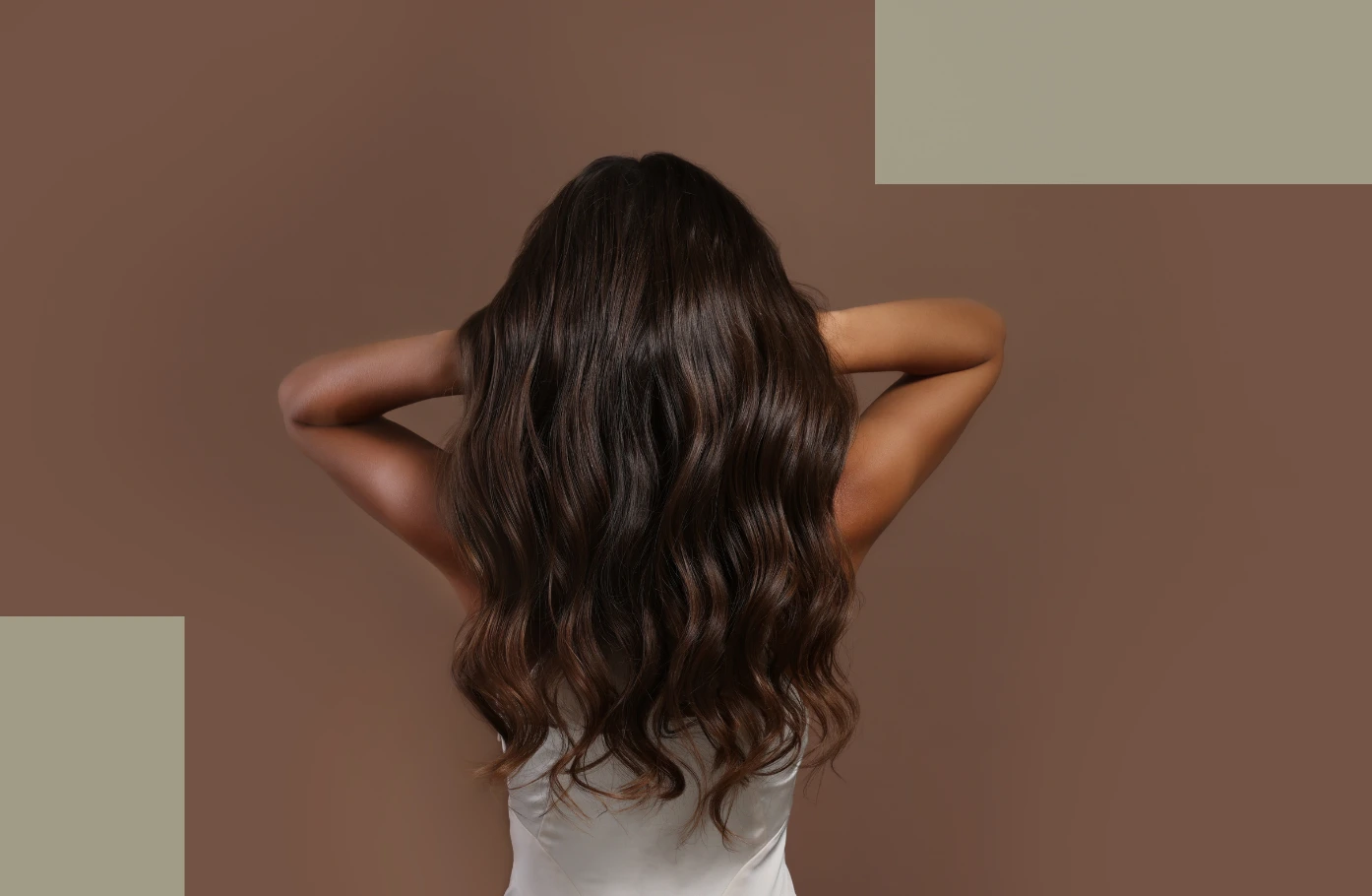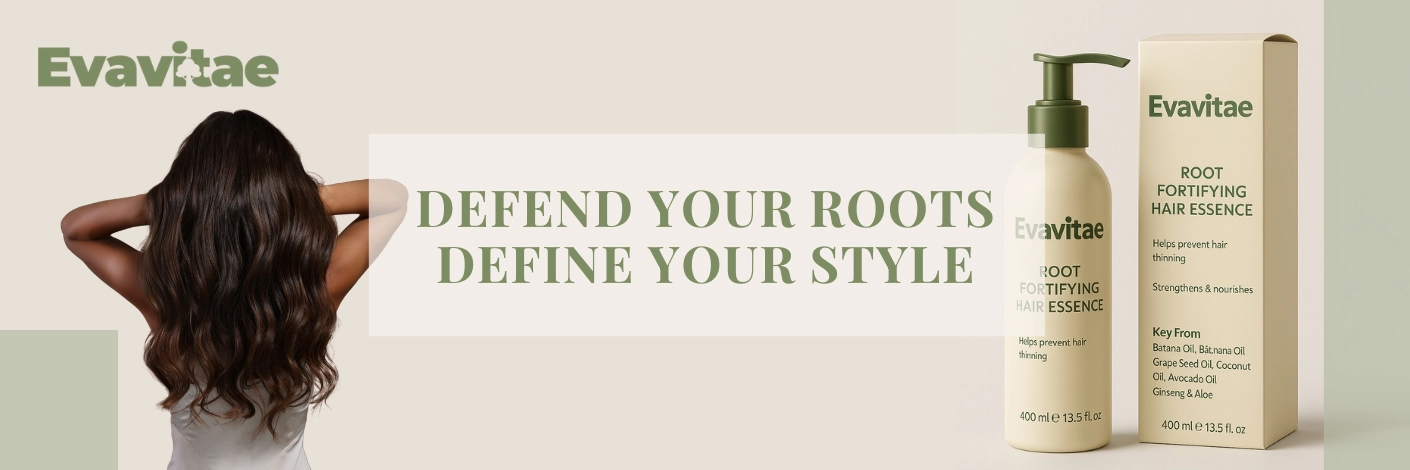
Why women benefit from a dedicated formula
- Hormonal fluctuations: Post-partum and menopausal shifts, or stress-related changes, can alter the hair growth cycle and follicle sensitivity.
- Scalp environment: Frequent coloring, heat tools, and styling residue can weaken the barrier and inflame the scalp.
When choosing a shampoo for hair loss women (people often search phrases like “shampoo for hair loss female”), focus on formulas that reduce shedding and repair the scalp barrier without over-stripping.
Key ingredients to seek out
- Biotin (Vitamin B7)
Helps reinforce keratin structure and strengthen fragile strands; suitable for most hair types.
Clinical evidence: Research has shown that biotin supplementation can improve hair growth in individuals with underlying deficiency (National Library of Medicine).
- Batana oil
Known for supporting the scalp barrier, reducing dryness and inflammation, and protecting follicles from oxidative stress—great for dry, sensitive scalps.
- Caffeine
Can stimulate follicles and help extend the anagen (growth) phase; useful for stress-related or post-partum shedding.
Supporting data: A 2014 dermatology review found caffeine topical solutions may counteract DHT-related hair loss (Journal of Dermatology).
(Journal of Dermatology).
- Saw palmetto extract
Commonly used to help moderate DHT, a hormone associated with miniaturization; often chosen for hormonally influenced shedding.
- Amino-acid / sulfate-free surfactants
Provide a mild cleanse that preserves lipids and the scalp’s microbiome—ideal for sensitive or dry scalps.
Tip: Look for transparent labels that disclose key actives and their roles. Pair “growth” actives with barrier-supporting emollients (like Batana oil) to avoid the cleanse-irritate cycle.
Once you’ve chosen the right shampoo formula, pairing it with a targeted serum can further enhance results. Learn more in our article on hair growth serums for women featuring natural ingredients that truly work.
Ingredients best minimized or avoided (and why)
1) Sulfates
- Common names: Sodium Lauryl Sulfate (SLS), Sodium Laureth Sulfate (SLES)
- Why they’re used: Strong cleansing and high foam.
- Potential downsides:
- Over-cleansing can strip the lipid mantle → tightness, itch, rebound oil.
- Long-term use may disrupt the barrier, increasing reactivity.
- Higher-risk users: Dry/sensitive scalps, eczema/seborrheic dermatitis, fine/chemically treated hair.
2) Silicones
- Common names: Dimethicone, Cyclopentasiloxane, Amodimethicone
- Why they’re used: Slip, frizz control, shine.
- Potential downsides:
- Occlusive film can build up on scalp/hair, leading to heaviness and the “never really clean” feeling.
- Often requires stronger detergents to remove, creating a cycle of strip → coat → strip.
- Higher-risk users: Oily scalps, fine or easily weighed-down hair, heavy styling product users.
3) Artificial colorants
- Common names: CI 19140 (Yellow 5), CI 42090 (Blue 1), CI 14700 (Red 4)
- Why they’re used: Aesthetic tinting.
- Potential downsides:
- Can trigger contact irritation in very sensitive users.
- Trace impurities may bother reactive skin types.
If you have a sensitive scalp, are pregnant, or are managing chronic skin conditions, a low-irritant formula (no sulfates, no heavy silicones, no artificial colorants) is usually the safest starting point.
Alongside choosing the right ingredients, the speed of results can depend on whether you focus on internal nutrition or external scalp care. To learn which works faster, explore our comparison on vitamins versus topical care for postpartum hair loss.
If you’re postpartum, ingredient choice is only part of the picture—nutrient gaps can also drive shedding. For context, see our guide on postpartum hair loss and the nutrient deficiencies most often linked to it, plus how to pair the right shampoo with recovery.
After narrowing down your shampoo formula, add a targeted leave-on to keep progress going between washes. Discover the key ingredients that make a hair growth serum work and how to spot high-quality formulations that support faster, fuller regrowth.
How to use your shampoo for better results
- Massage for 60–120 seconds
Use fingertips (not nails) to gently work the scalp. This boosts circulation and helps actives contact the follicle area.
- Be consistent for at least 8 weeks
Hair cycles are slow. Most users notice meaningful changes after 8–12 weeks of continuous use.
- Rinse thoroughly
Residue can cause itch or flakes—rinse until water runs clear.
- Support with nutrition & routine
Adequate protein, iron, zinc, and regular sleep help any hair loss shampoo for women perform more consistently.
Choosing the right shampoo is only the first step—combining it with a nourishing serum can accelerate visible regrowth. Learn more in our guide to hair growth serums for women that deliver real results through science.
Buying checklist (so you don’t waste time)
Choose a professional shampoo for hair loss women that offers:
- Evidence-based actives (biotin, caffeine, saw palmetto) and scalp-soothing oils (e.g., Batana)
- Clear labeling of key ingredients
- Honest reviews—especially from female users with similar concerns
- Sulfate-free cleansing system; minimal silicones and no artificial dyes
If you prefer a gentle, sulfate-free base with science-backed actives, a formula combining biotin, caffeine, and plant-based complexes is a strong place to start.
Four common wash mistakes (and easy fixes)
Mistake 1: Scratching with nails
- Why it’s a problem: Micro-scratches can inflame the scalp and trigger more oil.
- Healthy swap: Use fingertip pads and small circular motions from hairline to crown.
Mistake 2: Rushing the wash
- Why it’s a problem: Foam needs time on the scalp to lift oils and residue; leftover shampoo can cause itch.
- Healthy swap: Give the full routine ~10 minutes (apply, massage 60–120 s, let sit briefly, then rinse thoroughly).
Mistake 3: Over-washing
- Why it’s a problem: Frequent stripping roughens the cuticle and may increase shedding in fragile hair.
- Healthy swap: Most thinning or fragile hair does well with every-other-day washing. Very oily scalps may wash daily—use a mild cleanser and follow with a lightweight conditioner on lengths.
Mistake 4: Air-drying when sopping wet
- Why it’s a problem: After washing, cuticles are lifted and vulnerable; airborne particles can cling to damp hair.
- Healthy swap: Towel-dry to 60–70% first, then use a low-heat blow-dry to help close the cuticle quickly.
The bottom line
To truly reduce shedding and encourage new growth, choose a hair loss shampoo for women(try Evavitae) with proven actives and a gentle cleansing base. Read labels, favor biotin/caffeine/saw palmetto alongside barrier-supporting oils like Batana, and avoid harsh sulfates, heavy silicones, and artificial colorants when possible. Pair your shampoo for hair loss female routine with healthy wash habits and consistent use, and you’ll be far more likely to see thicker-looking, stronger hair over the next several weeks.
Pro tip: If you want a low-irritant, sulfate-free option backed by real-world reviews, consider a formula like Evavitae Anti-Hair Loss Shampoo—designed to cleanse gently while supporting visible fullness over time.
Discover gentle, fragrance-free options and expert guidance in our Postpartum Hair Recovery Guide.
Evavitae products are now available exclusively at www.evavitae.com.




Add comment
You must be logged in to post a comment.